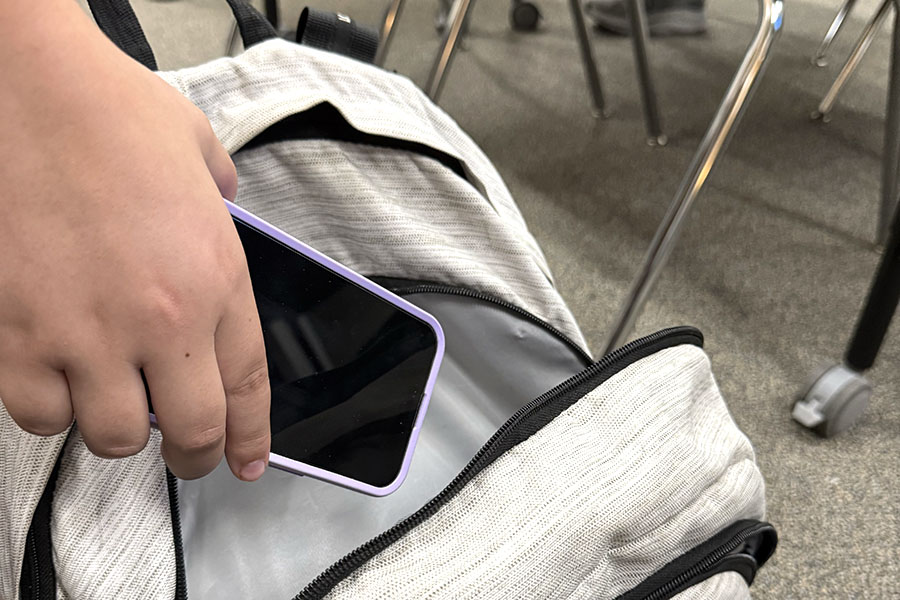The thrill of a third dimension: a dinosaur charging at the screen and the shrapnel of a great explosion racing toward the eyes of an enraptured audience. No other form of entertainment has proven to have quite the same electrifying effect, and yet some refuse to go along with this new medium of entertainment, claiming its negative effects outweigh any of its positive aspects.
Many of these negative effects are complaints of the 3D glasses themselves. They have been said to cause headaches, dizziness and reduce the viewer’s ability to see the picture clearly. There is a common consensus that the cost of having to wear distracting glasses is not worth the three dimensional experience. Some even feel that they are sacrificing not only comfort, but also the visual quality of the film. Rather than adding to the movie experience, the third dimension is tacked on, taking away from the film content and overall quality.
“3D messes with me and distracts me from the movie,” Devon Fisher, freshman, said. “I always end up taking my glasses off, forcing me to watch the movie in a blur.”
Even if the viewer thinks the 3D glasses are a perfect fit for their eyes, the additional three to four dollar price tag might be enough to turn a viewer toward the 2D alternative. Many don’t see what these four dollars worth of glasses are adding to the movie at all.
“I don’t really find it any more entertaining for the images to be three inches in front of my face than thirty feet,” Evan Phillips, senior, said.
According to Crunch Gear, a leading tech news source, a majority of viewers would actually prefer watching their favorite films in 2D over watching them in 3D. As a general population, America is just fine without this additional dimension. So why does it seem like this often unappreciated industry is invading an otherwise perfectly comfortable world of entertainment? It appears that while most could do without it, the third dimension has created quite a following.
Many people say they feel that they are a part of the action when watching a movie in 3D. They feel more like a participant of the film than a viewer of it. The Wrap, a website analysis of modern entertainment, found that a solid 80 percent of the people who saw Avatar chose to watch it in 3D. The interactive aspect of being on an alien planet or in the midst of an epic battle seems to be a real draw for the average moviegoer.
“[A 3-dimensional movie] puts it in a way that makes you feel like you’re really there,” Joey Fiala, sophomore, said.
However, this crowd of viewers appears to be diminishing rapidly. According to BTIG, a large capital market firm, since Avatar the three-dimensional film industry is constantly decreasing dramatically in gross profit. Despite a seemingly increasing lack of support, the three dimensional medium of entertainment is only continuing to grow. Continued experimentation in 3D technology, though slightly unnecessary or annoying to some, can ultimately help the advance of the film industry in general. Who knows, with enough development the third dimension could become the well-loved norm of the movie watching experience. For better or for worse, 3D is here to stay.



![Jumping off the ground, senior linebacker Bennett Patton snatches the ball out of the air for an interception at Thursday’s game against Chaparral. Patton had two interceptions in the 56-14 victory, tying the school record for interceptions in a game. “I was just playing the game,” Patton said. “[I’m] going to go into next week, forget about it and stay humble.” Photo by Harper Chapman](https://cphswolfpack.com/wp-content/uploads/2025/09/bennett-interception.jpg)
![The fire department came to the school after students were evacuated when smoke started coming from the ceiling of a classroom. All students and staff are safe. “All of my friends left their stuff too, so we couldn’t contact our parents, and it was stressful,” senior Brynn Fowler said. “It was scary because I didn’t know [what was going on], and I couldn’t find anyone because it was a big crowd.” Photo by Anthony Garcia](https://cphswolfpack.com/wp-content/uploads/2025/09/firetruck.jpg)


![Sitting with her friend senior Sohpia Struve at last year’s Austin City Limits Festival, senior Ava Zuniga poses for a picture under a pavilion. They are frequent attendees at ACL, an annual music festival at Zilker Park. “I would recommend seeing a bunch of people,” Zuniga said. “This past year, we camped out for Chappell [Roan] for a really long time. I think the whole point of ACL, [which] is a lot of fun, is that you can go see so many different people, even if you don’t know them. So by camping by one person, it really limits yourself from being able to go see a bunch of people.” Photo courtesy of Ava Zuniga](https://cphswolfpack.com/wp-content/uploads/2025/10/EE9E9484-FE6F-4AA0-B5F5-0C177AB32841-1200x857.jpeg)
![Broadcast, yearbook and newspaper combined for 66 Interscholastic League Press Conference awards this year. Yearbook won 43, newspaper won 14 and broadcast took home nine. “I think [the ILPC awards] are a great way to give the kids some acknowledgement for all of their hard work,” newspaper and yearbook adviser Paige Hert said. “They typically spend the year covering everyone else’s big moments, so it’s really cool for them to be celebrated so many times and in so many different ways.”](https://cphswolfpack.com/wp-content/uploads/2025/05/edited-ILPC.jpg)





![Looking down at his racket, junior Hasun Nguyen hits the green tennis ball. Hasun has played tennis since he was 9 years old, and he is on the varsity team. "I feel like it’s not really appreciated in America as much, but [tennis] is a really competitive and mentally challenging sport,” Nguyen said. “I’m really level-headed and can keep my cool during a match, and that helps me play a bit better under pressure.” Photo by Kyra Cox](https://cphswolfpack.com/wp-content/uploads/2025/09/hasun.jpg)

![Bringing her arm over her head and taking a quick breath, junior Lauren Lucas swims the final laps of the 500 freestyle at the regionals swimming competition on date. Lucas broke the school’s 18-year-old record for the 500 freestyle at regionals and again at state with a time of 4:58.63. “I’d had my eye on that 500 record since my freshman year, so I was really excited to see if I could get it at regionals or districts,” Lucas said. “ State is always a really fun experience and medaling for the first time was really great. It was a very very tight race, [so] I was a bit surprised [that I medaled]. [There were] a lot of fast girls at the meet in general, [and] it was like a dogfight back and forth, back and forth.” Photo by Kaydence Wilkinson](https://cphswolfpack.com/wp-content/uploads/2025/03/Kaydence-2.7-23-edit-2.jpg)
![As the support team sits and poses for a photo in the cafeteria with the counseling team they eagerly wait to start their day. "We [all] seem to be a team, I get up every day and there's days where I don't want to go to work today, but I'm thankful that I have a job and I'm blessed to have what I have," Christopherson said. Photo Courtesy of Julie Weltens.](https://cphswolfpack.com/wp-content/uploads/2025/01/AF9E8470-10D7-4C91-BF28-EC8F86BAB66C-1200x852.jpeg)
![As he sprints with the ball, senior running back Trae Hill breaks a tackle during Friday’s 35-14 loss against the Vandegrift Vipers. Hill ran for 135 yards and two touchdowns during the game. “[Scoring] was electric,” Hill said. “It always feels good to score, but the O-line did everything.”](https://cphswolfpack.com/wp-content/uploads/2025/09/IMG_0795allie.varfb_-1200x799.jpg)














